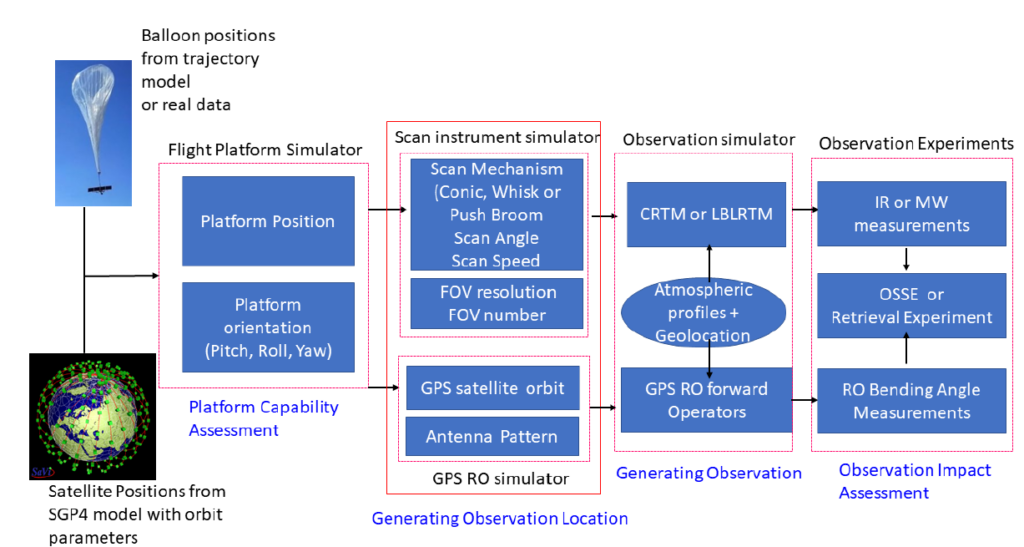
ESSIC/CISESS Scientists Likun Wang, Ross Hoffman and Kayo Ide have a new manuscript accepted for publication at the Journal of Atmospheric and Oceanic Technology titled “Orbit Simulator for Satellite and Near Space Platforms Supporting Observing System Simulation Experiments”.
The paper discusses a new upgrade to the Community Global Observing System Simulation Experiment (OSSE) Package (CGOP) developed by NOAA and JCSDA. The new orbit simulator for satellite and near space platforms can compute spatial, temporal, and view geometry parameters of the new observations based on the specific hosting platform and onboard instrument characteristics. These parameters are important for OSSE to extract atmospheric profiles and surface properties from nature run data and simulate new observations. In addition to simulating existing polar-orbiting and geostationary orbits, it is applicable to emerging near space platforms (e.g., stratospheric balloons), cube satellite constellations, and Tundra orbits. The observation geometry simulator includes not only passive microwave and infrared sounders but also radio occultation instruments.
With more than 16 years of progressive working experiences of NOAA’s satellite sensors, Dr. Likun Wang is responsible for the pre- and post-launch calibration testing data analysis, inter-calibration for post-launch instrument monitoring and assessment, ground processing software development, configuration and calibration parameter refining, and new algorithm design and integration. Currently serving as the chair of World Meteorological Organization (WMO) sponsored Global Space-based Inter-Calibration System (GSICS) infrared sensor working group, he promotes and develops new inter-calibration algorithms, procedures, tools, and datasets by cooperating with instrument calibration groups across participating agencies. His research interests include: 1) exploiting new, advanced and emerging observing systems that are flexible, responsive to evolving technologies, and economically sustainable (recent seminar), and 2) exploring innovative use of satellite data for new applications through an Artificial Intelligence (AI) and Machine Learning (ML) approach (talk), and 3) improving the quality of satellite observations for weather and climate applications through the calibration and validation efforts.
Ide is an Associate Professor in the Department of Atmospheric & Oceanic Science, Center for Scientific Computation & Mathematical Modeling, and Institute for Physical Science & Technology, along with Earth System Science Interdisciplinary Center. With background in engineering, theoretical fluid dynamics and applied mathematics, she studies earth system sciences from interdisciplinary perspectives. Her primary research interests are scientific prediction for earth systems and mixing & transport in geophysical fluids. For more information, please visit her website.
To access the paper, click here: “Orbit Simulator for Satellite and Near Space Platforms Supporting Observing System Simulation Experiments”.





